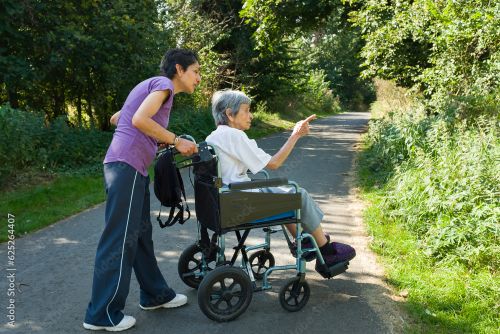Main Article Content
Environmental facilitators and barriers to community reintegration experienced by stroke survivors in an under-resourced urban metropolitan sub-district
Abstract
Background: Despite inpatient rehabilitation many stroke survivors struggle with community reintegration on returning home. The environment to which the stroke survivor returns affects and may limit participation in home and community-based activities.
Aim: To describe stroke survivors’ lived experiences of the environmental barriers and facilitators to community reintegration in an under resourced urban metropolitan sub-district in the Western Cape, South Africa.
Methods: A descriptive, qualitative study design with a phenomenological emphasis used semi-structured interviews to collect the data from purposefully selected stroke survivors who had been discharged for more than one year following inpatient rehabilitation. Supporting data were collected from interviews with two occupational therapists providing rehabilitation services to the stroke survivors. Deductive priori coding of semi-structured interviews with 11 stroke survivors, based on the environment subsystems described in the Person-Environment-Occupation-Performance (PEOP) model explored the barriers and facilitators to their community reintegration.
Findings: Of the six environmental sub systems in the PEOP model the systems and policy, access to information and health education, social determinants of health in the form of poor rehabilitation planning and loss of income as well as the built and natural environment presented the greatest barriers to the stroke survivor participants community reintegration. However, reintegration was facilitated by social support and social capital, social determinants of health in the form of support groups as well as assistive technologies.
Conclusion: Community reintegration continues to be a challenge for stroke survivors in an under-resourced urban sub-district due to environmental barriers associated with factors such as poor social support, inadequate implementation of policies and systems, poor compliance with home programmes, low socioeconomic status, poor access within the built and natural environment and inappropriate assistive devices. Several facilitators that occupational therapists can focus on to enable community reintegration included ensuring effective social support, access to community-based organisations, the introduction of home visits and provision of appropriate assistive devices.
Implications for practice
All stroke survivors must receive a comprehensive discharge plan to facilitate adequate access to continued rehabilitation and support for successful community reintegration.
- There must be a specific referral to primary health care rehabilitation services on discharge from hospital.
- Occupational therapists at community level have the responsibility to:
- advocate for, or assist stroke survivors to self-advocate, the removal of intersectoral environmental barriers that limit their community reintegration and community participation,
- where possible provide services in the home and involve midlevel workers when conducting home visits to enable successful reintegration into the home and resumption of occupational roles where possible,
- look to other resources in their community that can assist in facilitating the community reintegration of stroke survivors to enable access to health, education, productive activities, and social and leisure participation opportunities,
- improve their collaboration with the communities that they service.







